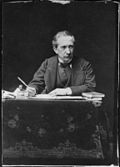Queen Victoria, Date of Birth, Place of Birth, Date of Death
TweetQueen Victoria
British monarch who reigned 1837–1901
 Date of Birth: 24-May-1819
Date of Birth: 24-May-1819
 Place of Birth: Kensington Palace, England, United Kingdom
Place of Birth: Kensington Palace, England, United Kingdom
Date of Death: 22-Jan-1901
Profession: monarch, painter, autobiographer, diarist
Zodiac Sign: Gemini 
About Queen Victoria
- Victoria (Alexandrina Victoria; 24 May 1819 – 22 January 1901) was queen of the United Kingdom of Great Britain and Ireland from 20 June 1837 until her death.
- On 1 May 1876, she adopted the additional title of empress of India.
- Known as the Victorian era, her reign of 63 years and seven months was longer than that of any of her predecessors.
- It was a period of industrial, cultural, political, scientific, and military change within the United Kingdom, and was marked by a great expansion of the British Empire. Victoria was the daughter of Prince Edward, Duke of Kent and Strathearn (the fourth son of King George III), and Princess Victoria of Saxe-Coburg-Saalfeld.
- After both the Duke and his father died in 1820, she was raised under close supervision by her mother and her comptroller, John Conroy.
- She inherited the throne aged 18 after her father's three elder brothers died without surviving legitimate issue.
- The United Kingdom was an established constitutional monarchy in which the sovereign held relatively little direct political power.
- Privately, she attempted to influence government policy and ministerial appointments; publicly, she became a national icon who was identified with strict standards of personal morality. Victoria married her cousin Prince Albert of Saxe-Coburg and Gotha in 1840.
- Their children married into royal and noble families across the continent, earning Victoria the sobriquet "the grandmother of Europe" and spreading haemophilia in European royalty.
- After Albert's death in 1861, Victoria plunged into deep mourning and avoided public appearances.
- As a result of her seclusion, republicanism in the United Kingdom temporarily gained strength, but in the latter half of her reign, her popularity recovered.
- Her Golden and Diamond Jubilees were times of public celebration.
- She died on the Isle of Wight in 1901.
- The last British monarch of the House of Hanover, she was succeeded by her son Edward VII of the House of Saxe-Coburg and Gotha.
Read more at Wikipedia
See Also
- Famous People's Birthdays on 24 May, United Kingdom
- Famous People's Birthdays in May, United Kingdom
- Famous monarch's Birthdays on 24 May, United Kingdom
- Famous monarch's Birthdays in May, United Kingdom
- Famous painter's Birthdays on 24 May, United Kingdom
- Famous painter's Birthdays in May, United Kingdom
- Famous autobiographer's Birthdays on 24 May, United Kingdom
- Famous autobiographer's Birthdays in May, United Kingdom
- Famous diarist's Birthdays on 24 May, United Kingdom
- Famous diarist's Birthdays in May, United Kingdom


